Discover the beauty of colour through games the Peplos Kore
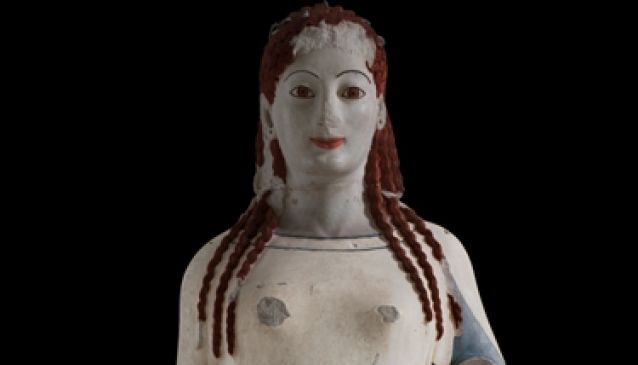
In 2009 the new Acropolis Museum, in the heart of the city of Athens, was inaugurated. Ever since, thousands of visitors have wandered throughout its premises. Tourists from every corner of the planet, ancient Greek culture enthusiasts, young scholars eager to discover the secrets of the past centuries, veteran historians, teachers and citizens of all ages observe both the temporary exhibitions and the permanent collections, whose monuments pride for their glorious, continuous history.
Some of you may prefer the Parthenon Gallery than the Gallery of the Slopes of the Acropolis, while others may enjoy walking around – the three dimensional exhibits in the Archaic Gallery. Whatever your fondness is, we're very delighted to introduce to you The Acropolis Museum’s new research project, Archaic Colours that will be conducted until July 2013.
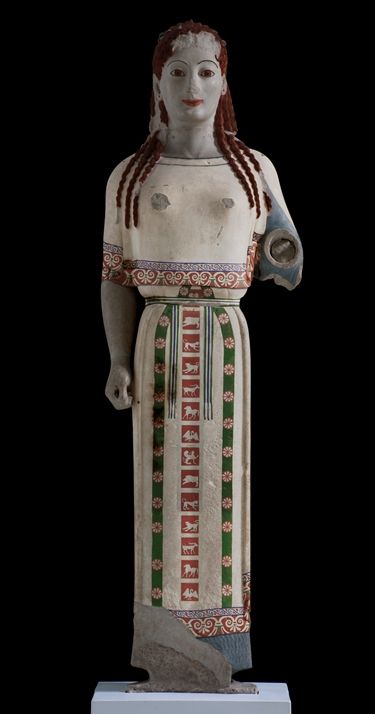
Peplos Kore, possibly Artemis
Everyone knows how detailed yet plain the characteristics of archaic statues are. All of us, at some point, when being in front of such exhibits, intensively stare at the details of a young lady’s, (Kori’s) curly hair or at her dresses’ elegantly falling folds. Well, imagine these statues being decorated with various colours and metal elements and you will pretty much get an idea of what they used to be like... Even though we are not able to admire their original appearance, since most of their colours have faded throughout the centuries, we can curiously exploit them: using the necessary technology features along with the available historical knowledge, we can evaluate how much they are worth, in their faded yet so vivid presence! As the experts point out, ‘colour, far from being just a simple decorative element, added the sculpture’s aesthetic quality’. This is what the program is for: evaluation and experience.
For ancient Greeks and their culture, colour represented a mean to portray a variety of different attributes. The gold blond hair of the gods project projected their power, the brown skin of the soldiers and athletes was a sign of integrity and courage, while the white complexion of the korai conveyed the grace and brilliance of youth.
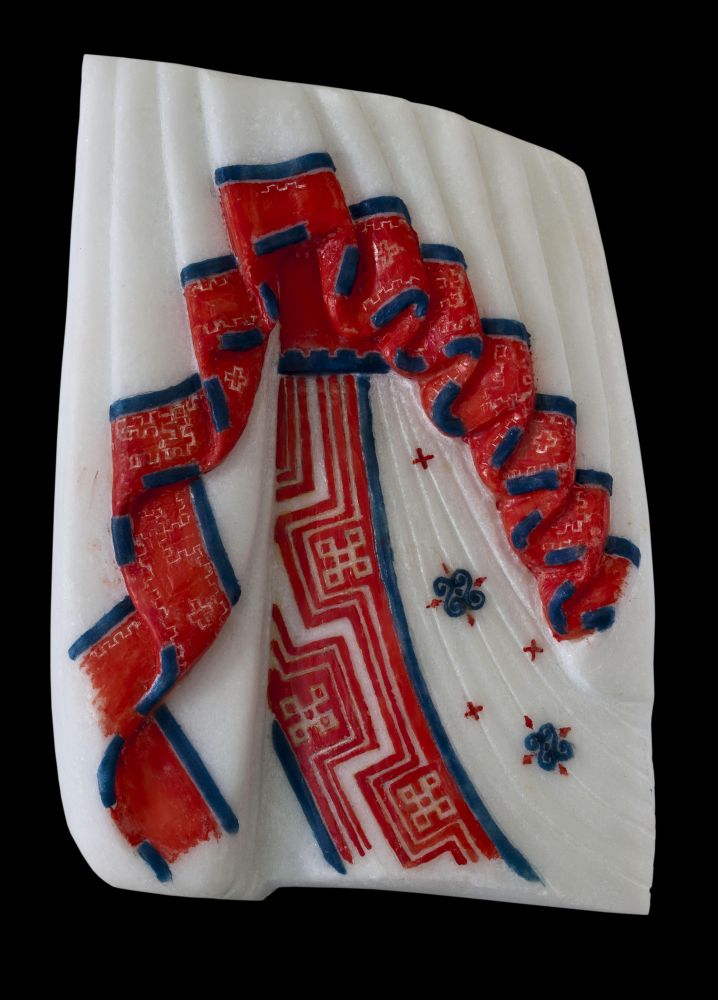
Chios Kore. The red colour was cinnabar the blue was Egyptian blue.
The Archaic Colours program aims, therefore, to conduct a vast, multidimensional dialogue-like research in relation to the surviving colours in the sculptures. Every person is more than welcome to participate in this discussion, depending on its abilities and special interests: from the implementation of new technologies by specialized scientific staff (involved in technical issues, such as spectroscopic analysis, experimental use of colour on Parian marble surfaces or digital restoration of the statues), archaeologists-hosts (which can be easily pinpointed, as they have red and white badges and wander throughout the aisles of the Acropolis Museum daily from 9 am to 5 pm) to the happiest children’s questions, all of us are called to teach and be taught by searching, querying, discovering!
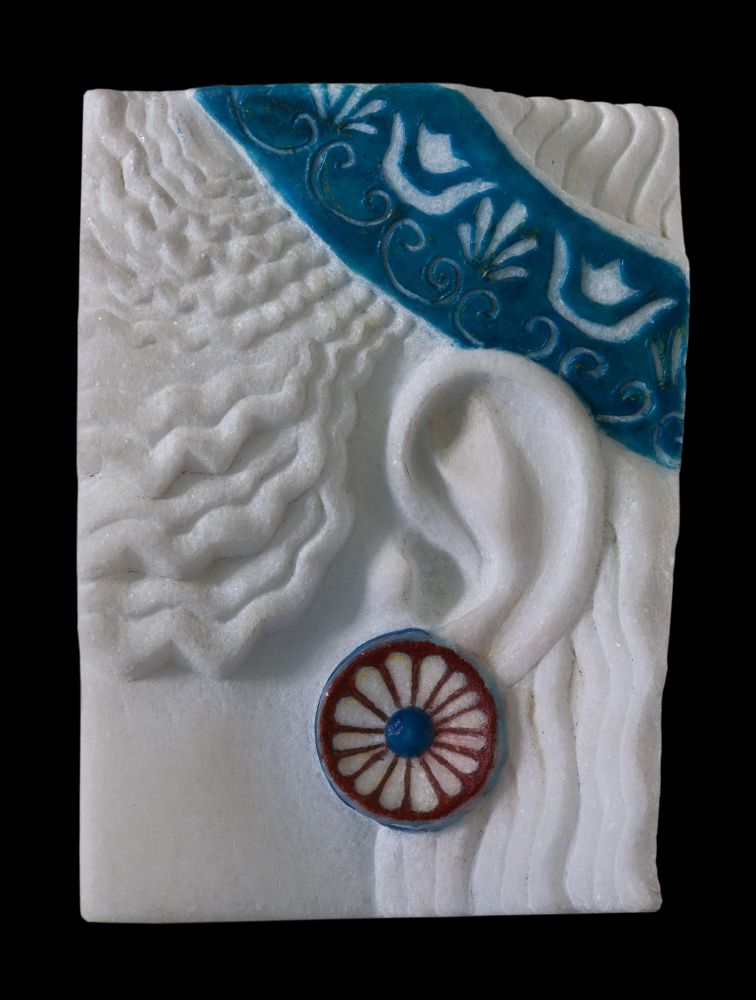
Kore. The earring was decorated with hematite (brown-red) and Egyptian blue. The stephane on her hair was decorated with Egyptian blue, conichalcite (dark green) and malachite (green)
The brief thematic presentations, always carried out with high quality visual material, are conducted in both Greek and English language. Note that these gallery talks are held on a daily basis at 12 noon in English language and at 13.00 in Greek language and that they are limited to 15 participants per session. And because knowledge is nicely combined with... group fun, the Acropolis Museum invites all members of every visiting family to participate in the following three games:
1. The game of discovering details, in the statues whose colours are still preserved.
2. The painting box: children can use colours and brushes to paint the Peplos Kore. This educational game is also available in digital online interactive form, entitled Colour the Peplos Kore. Our little friends can draw the Kore in their homes, as many times as they wish, using many types and brushes and colours!
3. The DOMINO, in which children are able to combine and mingle earrings and clothing of the ancient female Korai.
The invitation is open to everyone: Till the end of July 2013, visit the Acropolis Museum and spend a beautiful and productive day with your little fellows or escorts, by choosing different thematic presentations.
Learning about ancient sculpture colours can intrigue all of us to splash colours in our daily palette of life!
For more information and entry forms visit the Information Desk at the entrance of the museum, where coupons are available on a first-in first-served basis. The Archaic Colours project is part of the museum's program 'A day at the Acropolis Museum'.
Information and photos courteously provided by the Acropolis Museum.
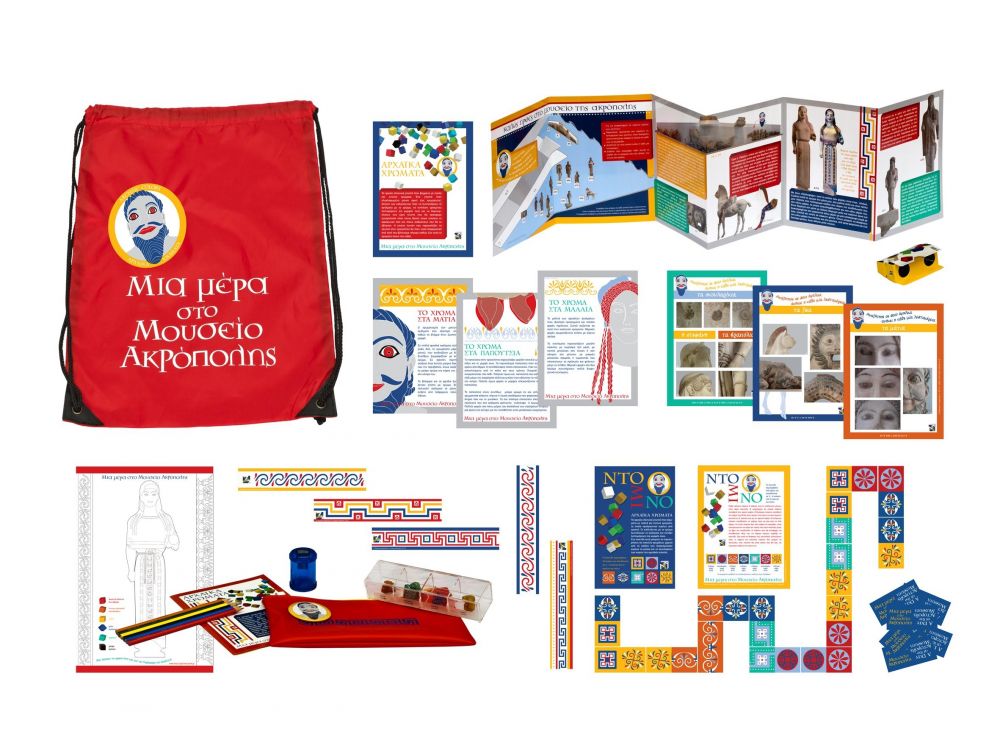
Family Pack - Archaic Colours